
Juicer Buying Guide
The nutritional benefits of eating fruits and vegetables are undeniable, but what about drinking them instead? That question has led to a surge in countertop juicers aimed at people looking to bring the juice bar experience home.
Claims for juicers in infomercials and celebrity endorsements range from the ability of juice to ease muscle aches, alleviate high blood pressure, and even increase sexual potency. And ubiquitous juice cleanses are touted as a way to flush out toxins, make your skin glow, and slim you down for that big reunion or red carpet walk.
Don’t believe the pulp fiction. The evidence says otherwise. Juice cannot be any better than the produce from which it’s made. It can even be less nutritious if much of the dietary fiber is removed in the process.
That said, a juicer can certainly add vitamins, minerals, and other nutrients to your daily diet. But only if you use it regularly and that’s not always easy. Some models we tested were so complicated to operate and so hard to clean that they’d probably end up collecting dust in a dark corner of your kitchen cabinet.
Two Juicer Types to Consider
Do you prefer a bracing elixir of leafy greens or a sweet and tropical mix of pineapple and orange? The type of juicer you choose largely depends on what you like to drink. In our testing, there was the same amount of prep work for both types.
Auger-Style
Auger-style juicers, sometimes referred to as masticating or cold-press juicers, crush and mash the produce. They’re typically more expensive, and can also take some getting used to as the augers can jam when grinding tough fruits and veggies. For this reason, every one we tested has a reverse button. The upside with this style is they tend to leave more healthful and fiber-rich pulp in the juice.
Juice Extractors
Sometimes called centrifugal juicers, these types use a rapidly whirling disk to cut fruit or vegetables into tiny pieces that are then spun to separate the juice from the pulp. The juice is then strained and it flows into a cup. Some extractors, especially those that require full dismantling, can be difficult to clean. In general, extractors also tend to remove more fiber from your juice than an auger model.
Convenience Features
- 1
- / 5
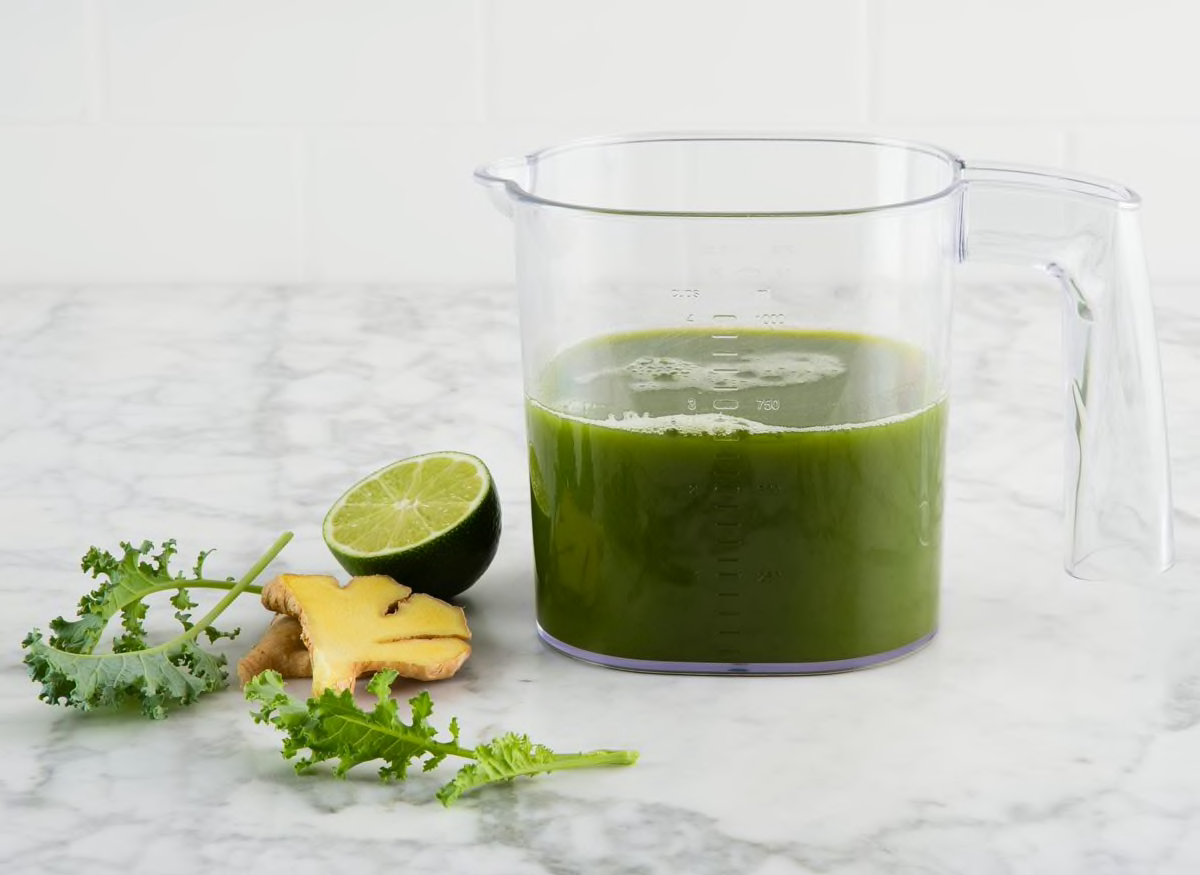
Clear Juice Container
With a clear container, you can easily see the juice level. Better, though not universal among units we’ve tested, are visible markings in fluid ounces and milliliters.
PHOTO: JASON WORRELL
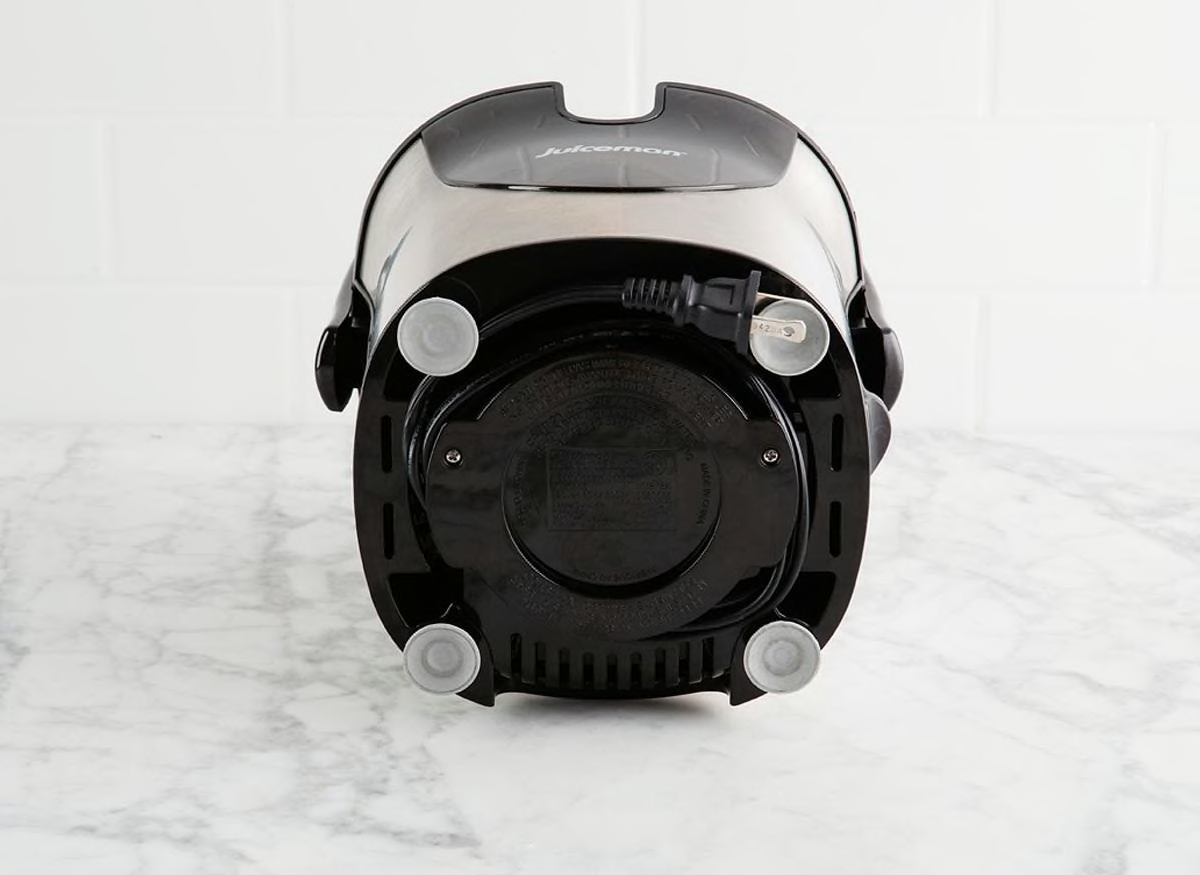
Cord Storage/Long Cord
Cords up to four feet or longer allow more flexibility in where you can place the unit. You should, of course, exercise caution. And even models with long cords typically have some way to hide the cord when you’re not using the juicer.
PHOTO: JASON WORRELL
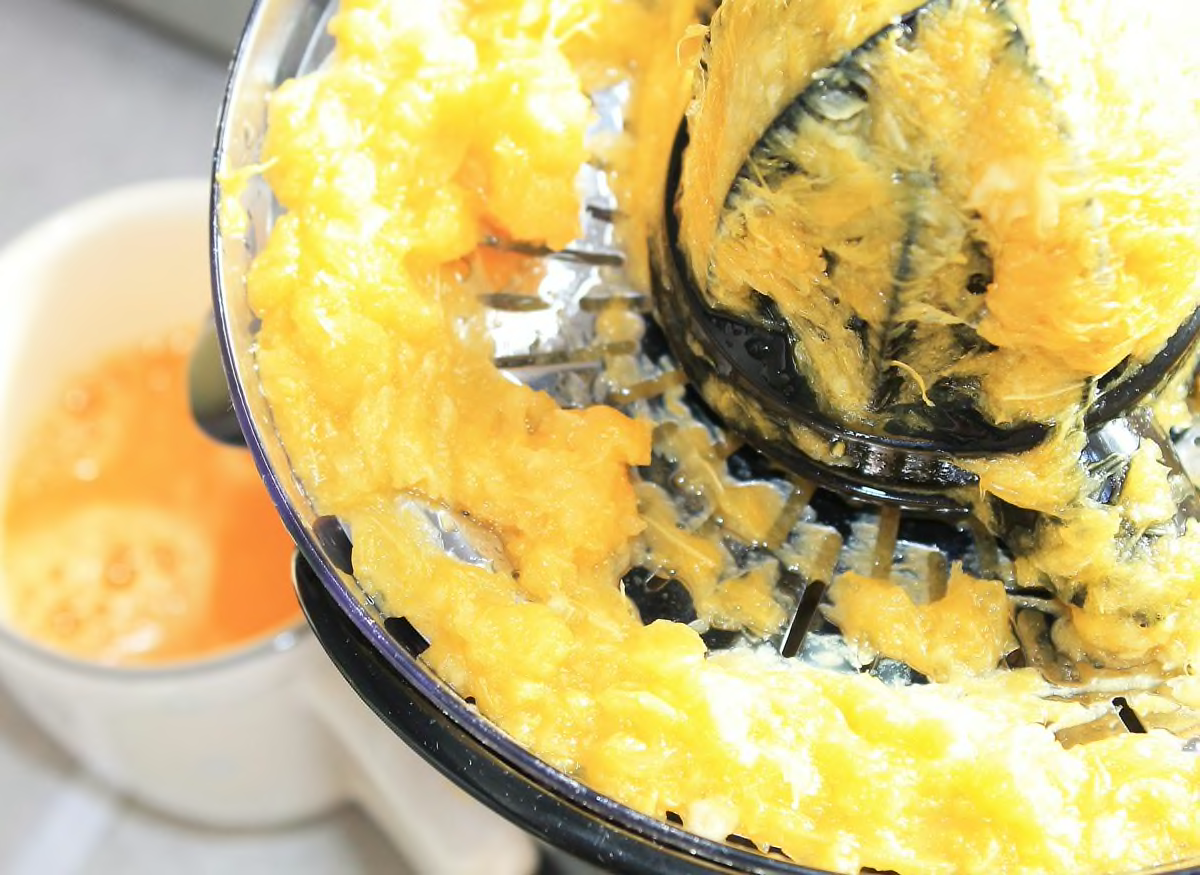
Dishwasher Safe
Removable parts, which must be washed after each use, can be placed on the top rack of the dishwasher.
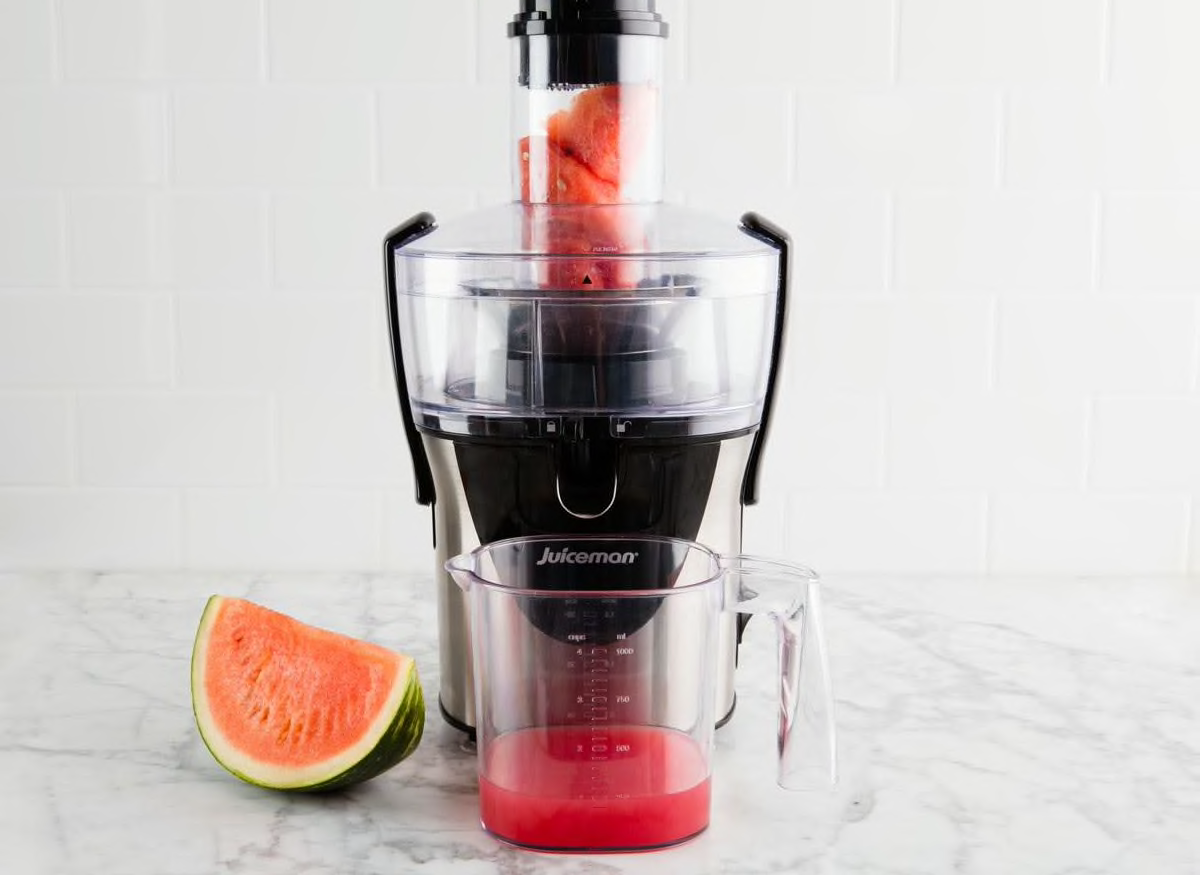
Large Chute
Accommodates larger pieces of produce to cut down prep time.
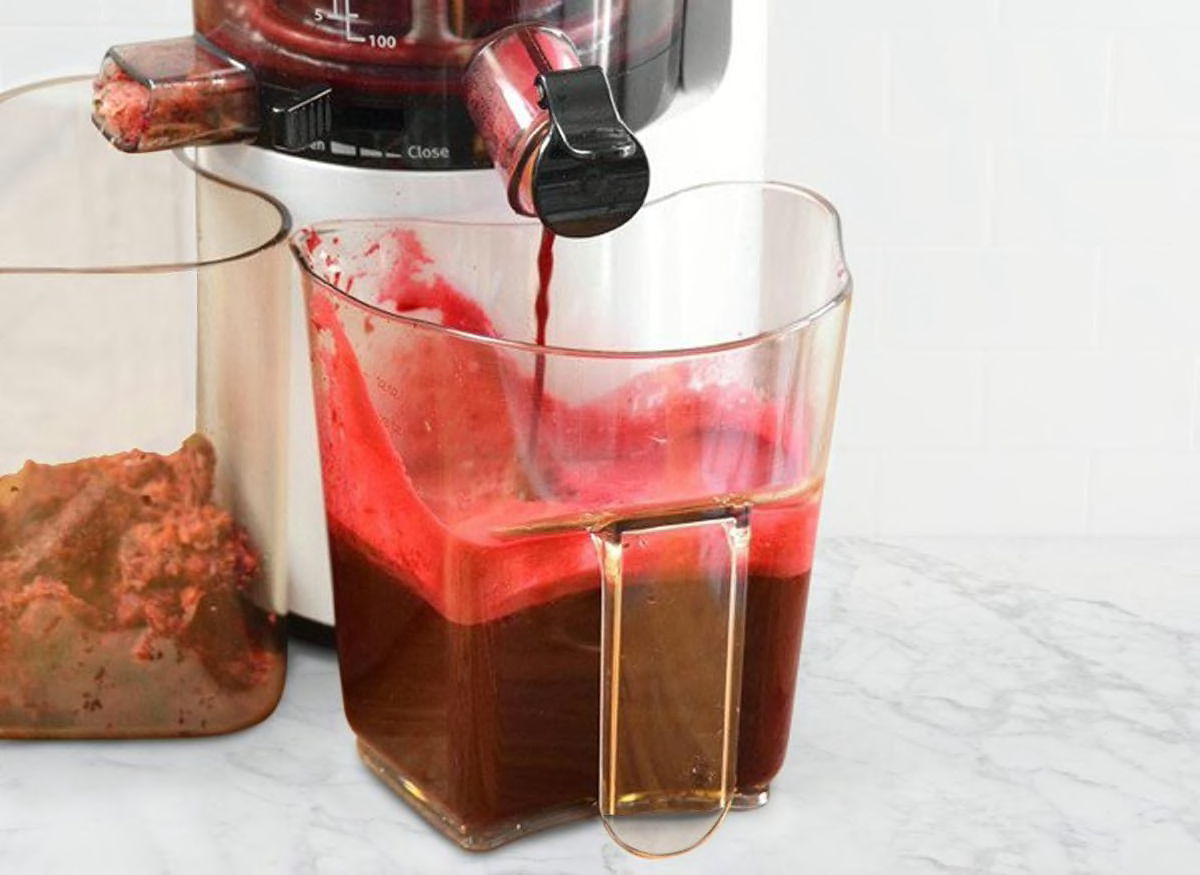
Pulp Regulator
This allows for some variation of juice pulpiness, though fully pulp-free juice is not necessarily an option.
PHOTO: HUROM
Clear Juice Container
With a clear container, you can easily see the juice level. Better, though not universal among units we’ve tested, are visible markings in fluid ounces and milliliters.
PHOTO: JASON WORRELL
Cord Storage/Long Cord
Cords up to four feet or longer allow more flexibility in where you can place the unit. You should, of course, exercise caution. And even models with long cords typically have some way to hide the cord when you’re not using the juicer.
PHOTO: JASON WORRELL
Dishwasher Safe
Removable parts, which must be washed after each use, can be placed on the top rack of the dishwasher.
Large Chute
Accommodates larger pieces of produce to cut down prep time.
Pulp Regulator
This allows for some variation of juice pulpiness, though fully pulp-free juice is not necessarily an option.
PHOTO: HUROM
Juicer Brands
There are some familiar players in the juice-maker market, including one brand, Cuisinart, that offers a juicer as an accessory to its other products. Use these profiles to compare juice makers by brand.
This popular brand offers a range of masticating and centrifugal juice extractors at everyday prices. Models are available at mass market, department stores, and online retailers.
This major brand offers a range of citrus juicers and juice extractors in various capacities, touting one-handed operation and easy cleaning. Black+Decker juice products are available through online retailers, Walmart, Target, Kmart, and other sellers.
This popular premium brand of masticating and centrifugal juice extractors is available at department stores, specialty stores, and online retailers. Prices range from mid to high.
This mid-range-to-premium brand currently offers masticating and citrus juice extractors. Cuisinart is widely available in department, specialty, and appliance stores, and through online retailers.
This brand is a subsidiary of Tri-Star Products and endorsed by Jason Vale. This As-Seen-on-TV masticating juice extractor is available online at Fusionjuicer.com, Amazon.com and Walmart. Prices mid-range.
This brand offers a selection of low-priced juice extractors in the HealthSmart and Big Mouth lines. The latter can fit some whole foods, such as small apples, without pre-slicing. Products made by Hamilton Beach, along with those of its sister brand Proctor Silex, are available through department stores, appliances stores, and big-box retailers.
This brand offers a line of masticating juice extractors at department and specialty stores and online retailers. Price range is high.
Born in the early days of World War I, Jack LaLanne is a fitness expert whose health and fitness show enjoyed a 34-year run. His Power Juicer, sold in several models, is available today via phone order, over the Internet, and at mass-market retailers such as Walmart, Kmart, and Target.
This major brand offers centrifuge, masticating, and traditional citrus juice extractors. They are available at department stores, Bed Bath & Beyond, mass market and online retailers. Prices range mid to high.
Other juicer brands currently on the market include Dash, Fagor, Juice Bullet, Juiceman, Kuvings, L’Equip, Ninja, and Oster.















